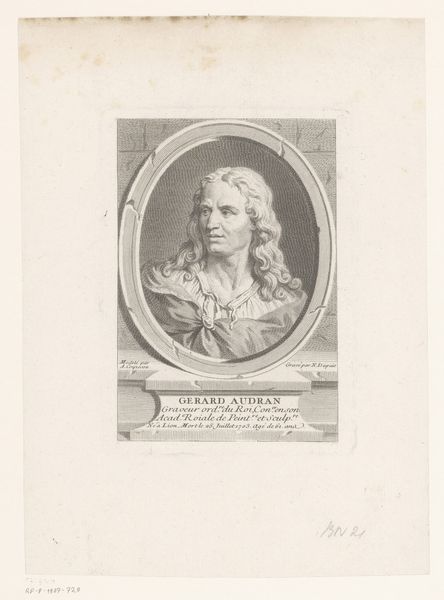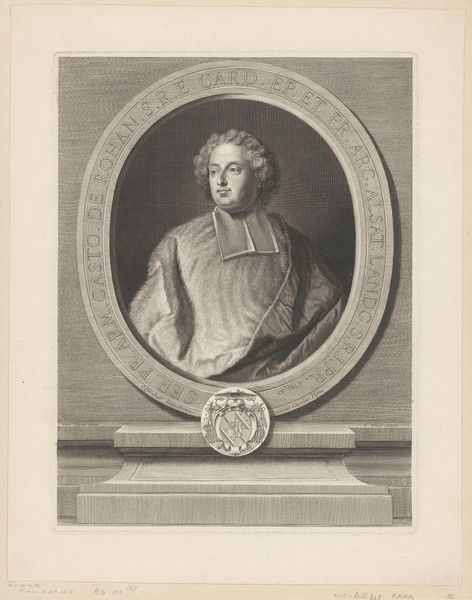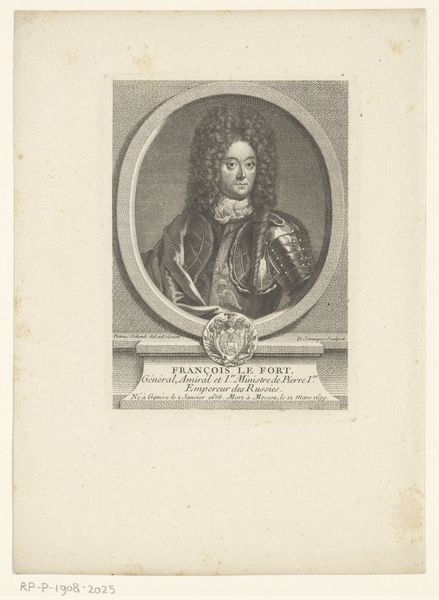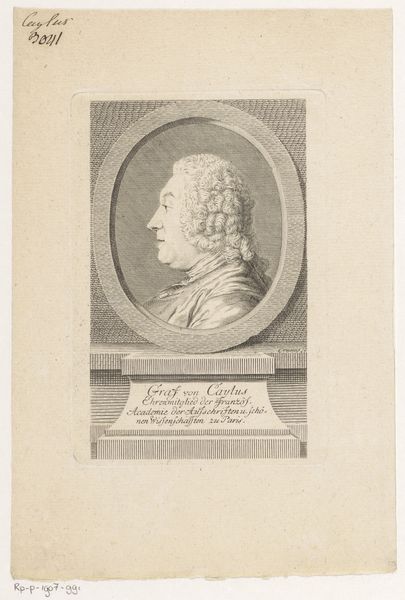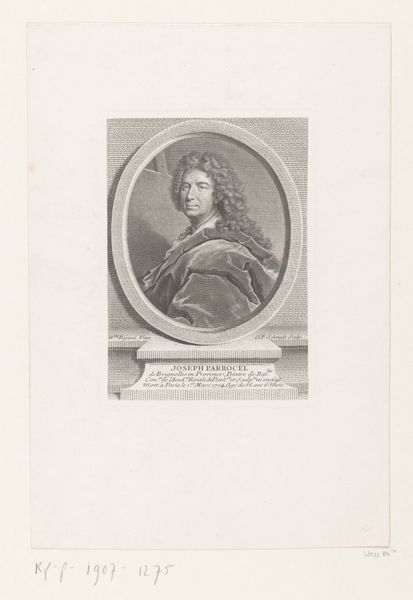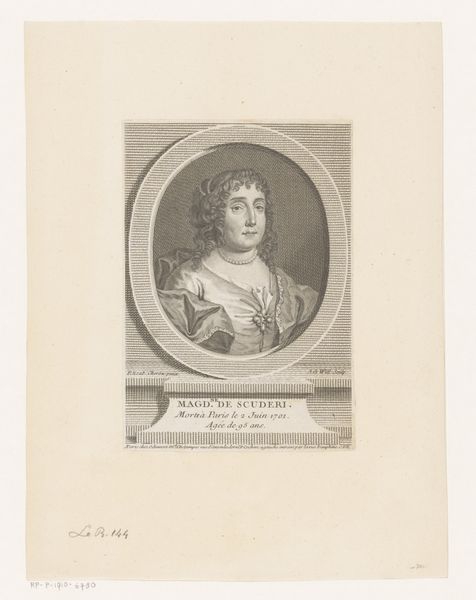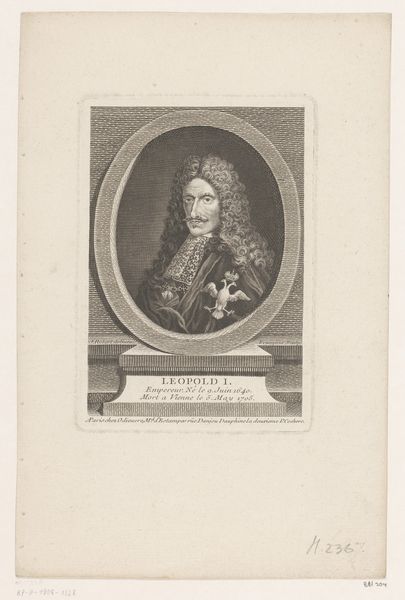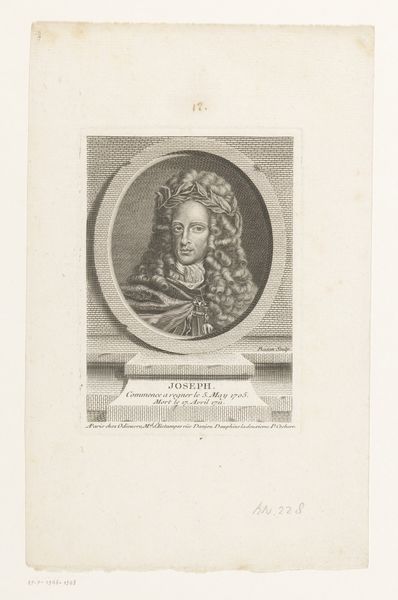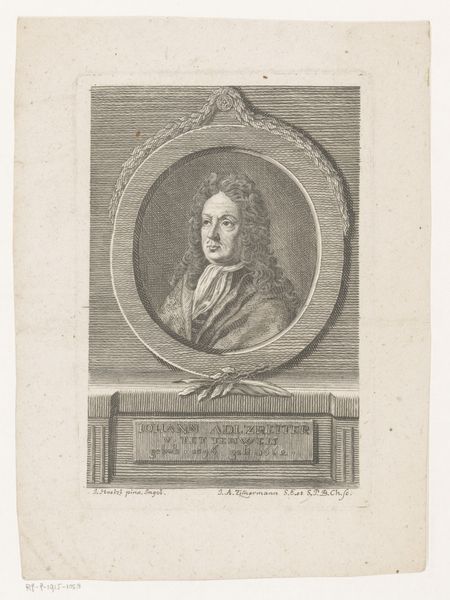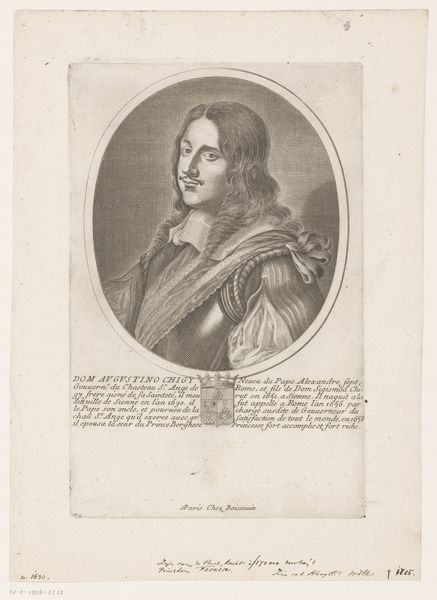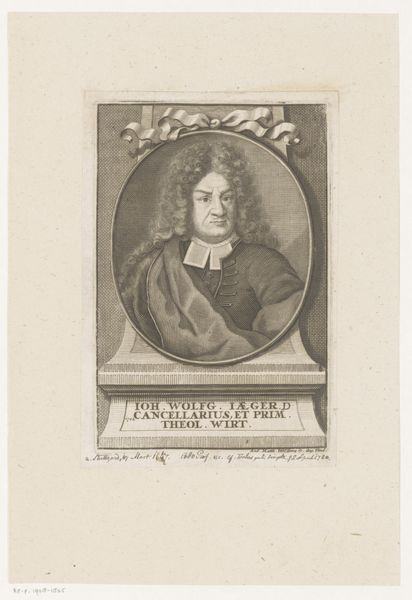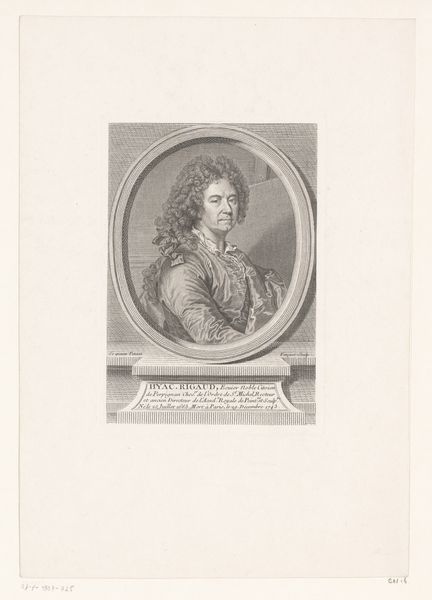
print, engraving
#
portrait
#
baroque
# print
#
classical-realism
#
figuration
#
line
#
history-painting
#
engraving
Dimensions: height 153 mm, width 111 mm
Copyright: Rijks Museum: Open Domain
This is an engraving of Ludovico Sforza, Duke of Milan, made by Sébastien Pinssio in the 18th century. The process of engraving involves meticulous labor. The artist would have used a tool called a burin to carve lines into a metal plate, which was then inked and pressed onto paper. Notice the incredible detail achieved through the density and direction of these lines. They define Sforza’s features and clothing, even capturing the texture of his hair. The process is time-consuming, requiring great skill. Engravings like these were made possible by the printing press, a technology that fueled the distribution of information and images. They served not only as portraits but also as a means of circulating knowledge and asserting power through visual representation. While we might consider this print “fine art,” it's important to remember its connection to broader social issues of labor, politics, and consumption. By considering the material and making of this portrait, we gain a richer understanding of its cultural significance.
Comments
No comments
Be the first to comment and join the conversation on the ultimate creative platform.

